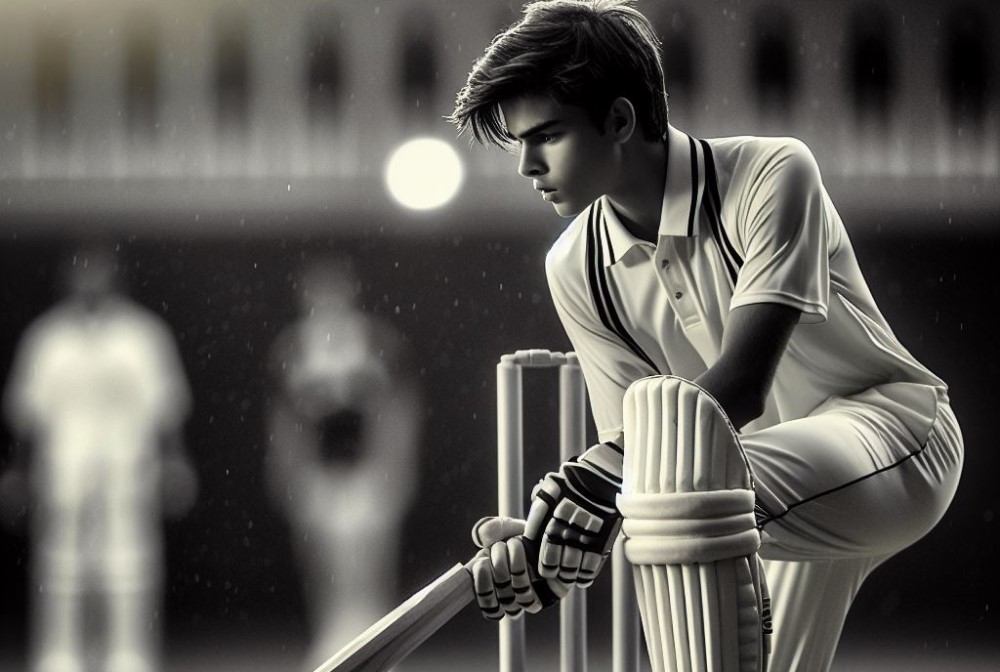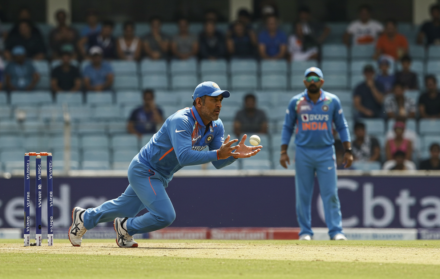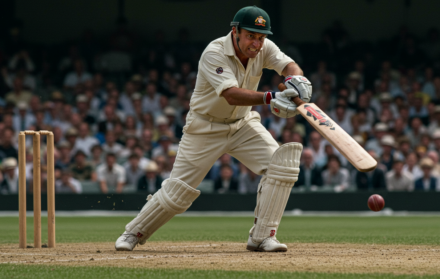
How Can Beginners Master The Basics Of Cricket Bowling
Cricket bowling is a skill that requires precision, technique, and practice. For beginners looking to master the basics of cricket bowling, understanding the fundamental components and different types of bowling techniques is essential.
By developing accuracy, working on pace, and enhancing spin and swing, beginners can improve their bowling skills and make a significant impact on the game.
Building strength and flexibility, practicing regularly, and seeking guidance from coaches are key tips to keep in mind during the learning process.
Mental preparation and match strategies, such as developing a game plan, understanding the opponent, and dealing with pressure situations, are crucial for success on the field.
With dedication, perseverance, and a focus on the fundamentals, beginners can gradually become proficient cricket bowlers.
Understanding the Basics of Cricket Bowling

Cricket bowling is an art that requires a strong foundation in the basics. In this section, we’ll dive into the key aspects of understanding the basics of cricket bowling. From mastering the grip and hand placement to perfecting the run-up and approach, and finally, nailing the delivery stride and timing.
Get ready to discover the vital building blocks that will set beginners on the path to becoming skilled bowlers in the game of cricket.
Grip and Hand Placement
Mastering the art of grip and hand placement is crucial to excel in the sport of cricket bowling. Follow these steps diligently to perfect your technique:
- Grasp the ball firmly with your dominant hand and evenly distribute your fingers along the seam.
- Leave a slight gap between your thumb and index finger to enhance control and stability.
- Ensure that your grip is secure but not excessively tight, allowing for flexibility and a smooth release.
- Experiment with different grips, including the traditional and knuckle grip, to develop versatility in your bowling.
- Maintain a consistent grip throughout your delivery and adapt it based on the desired type of ball.
- Continue honing your grip and hand placement skills through regular practice sessions and under the guidance of experienced coaches.
Run-Up and Approach
Mastering the run-up and approach is crucial for beginners looking to excel in cricket bowling. Here are some steps to consider:
- Start with a balanced stance, with your non-bowling arm extended for balance.
- Build momentum by taking quick, controlled strides during your run-up.
- Time your last stride so that your front foot lands just before the crease.
- Maintain a smooth and fluid approach towards the delivery stride.
- Keep your head still and eyes focused on the target throughout the run-up and approach.
- Practice different angles and positions for the run-up and approach to vary your deliveries.
- Develop consistency by focusing on a repeatable and comfortable run-up and approach.
Delivery Stride and Timing
- Delivery Stride: The delivery stride is a crucial aspect of cricket bowling, where the bowler focuses on the perfect timing to take their final steps towards the crease before releasing the ball.
- Timing: Proper timing of the delivery stride is essential for maintaining balance and generating power during the bowling action.
- Foot Placement: The bowler must ensure precise foot placement during the delivery stride to achieve accuracy and control.
- Step Length: Maintaining an optimal step length is important for generating momentum and effectively transferring power from the legs to the upper body.
- Alignment: Bowlers need to align their body towards the target and ensure their hips and shoulders are coordinated during the delivery stride, thus enhancing the delivery’s effectiveness.
- Bowling Arm: The correct positioning of the bowling arm during the delivery stride significantly influences the line and length of the ball.
The Different Types of Bowling Techniques

Whether you’re a cricket enthusiast or just starting out, understanding the different types of bowling techniques is vital. In this section, we’ll explore the art of fast bowling, the finesse of swing bowling, and the allure of spin bowling.
Get ready to uncover the secrets behind each technique and how they make cricket such a captivating sport. So grab your cricket ball and let’s dive into the fascinating world of bowling!
Fast Bowling
Fast bowling is a fundamental component of the game of cricket, demanding traits such as speed, agility, and accuracy. To excel in the art of fast bowling, one must concentrate on three crucial areas: technique, physical conditioning, and mental preparation.
When it comes to technique, it is imperative to cultivate a robust and fluid action, coupled with an effective delivery stride. Focusing on generating pace through a powerful follow-through and maintaining the correct wrist position are also essential aspects to master.
In terms of physical conditioning, it is crucial to enhance strength and power in the lower body through exercises such as squats and lunges. Additionally, improving flexibility is vital to mitigate the risk of sustaining injuries.
Regarding mental preparation, maintaining focus and confidence is paramount. Formulating a strategic game plan tailored to each opponent is imperative. Furthermore, acquiring the ability to cope with pressure situations calmly and composedly is integral to achieving success.
Australia’s Dennis Lillee stands out as one of the most illustrious fast bowlers in the history of cricket. Renowned for his blistering pace and aggressive style, Lillee dominated batting line-ups throughout the 1970s.
Establishing an incredible record of 355 wickets in 70 matches, he holds the distinction of being the Australian bowler with the most Test wickets. Lillee’s remarkable skills and unwavering determination have cemented his status as an icon in the realm of fast bowling.
Swing Bowling
Swing bowling is a technique in cricket where the bowler makes the ball deviate in the air. It can be achieved by incorporating Swing Bowling and creating a difference in air pressure on either side of the ball. Below highlights key aspects of swing bowling:
- Gripping the ball: Hold the ball with fingers along the seam and angled towards the shiny side.
- Shining the ball: Polish one side of the ball to create a smooth surface for aerodynamic effect.
- Seam position: Keep the seam vertical or slightly tilted towards the shiny side.
- Release point: Try to release the ball slightly towards the shiny side.
- Bowler’s action: Maintain a smooth and relaxed action to generate swing.
Fact: Swing bowling has been a game-changer for bowlers, leading to remarkable performances and unexpected breakthroughs in cricket matches.
Spin Bowling
Spin bowling in cricket is a specialized technique where the bowler imparts spin on the ball to confuse the batsman. It requires skill and control to master the art of spin bowling. Here are some key aspects of spin bowling:
- Types of Spin Bowling Techniques: There are different types of spin bowling techniques, including off-spin, leg-spin, and left-arm orthodox spin.
- Grip and Hand Placement: The grip and hand placement are crucial to generate spin. The bowler needs to hold the ball with the right fingers and position the wrist correctly.
- Body Positioning: A proper body positioning during the delivery stride is essential for effective spin bowling. The bowler needs to maintain balance and have a controlled follow-through.
- Flight and Trajectory: Varying flight and trajectory can deceive the batsman. Bowlers need to understand how to flight the ball and create dip and turn.
- Variation and Control: Spin bowlers must possess a repertoire of deliveries, including variations in pace, spin, and line. Control over these variations is crucial to outwit the batsman.
Mastering the Fundamentals

If you’re a beginner looking to master the basics of cricket bowling, then this section is where you’ll find your stride! From developing accuracy to working on pace, and enhancing spin and swing, we’ll dive into the key sub-sections that will lay the foundation for your bowling skills.
So, grab your cricket ball and get ready to level up your game on the pitch!
Developing Accuracy
Developing accuracy is of utmost importance when it comes to mastering the fundamentals of cricket bowling. To enhance accuracy, consider the following steps:
- Place emphasis on maintaining proper body alignment throughout the delivery stride.
- Dedicate time to establishing consistent release points in order to have better control over line and length.
- Repetitively aim at specific targets to refine precision.
- Ensure careful attention is given to footwork and balance to sustain control during the delivery.
- Study and learn from errors to make necessary adjustments.
Fact: Consistent practice and meticulous attention to detail are indispensable for developing accuracy in cricket bowling, which ultimately leads to enhanced performance on the field.
Working on Pace
Working on pace is crucial when it comes to mastering cricket bowling. To improve your speed and control, it is important to focus on various aspects of your technique and fitness.
- Focus on fitness: Enhance your stamina, strength, and agility by engaging in training and conditioning exercises. This will allow you to maintain a consistent pace throughout the game.
- Perfect your run-up: Develop a smooth and efficient run-up that generates momentum and power. This will contribute to the speed and force of your delivery stride.
- Maintain a solid front arm: Throughout your bowling action, ensure that your front arm remains strong and extended. This will maximize your speed and control over the ball.
- Work on your action: Refine your bowling action to achieve a fluid and coordinated movement. A well-executed action translates into increased pace.
- Use explosive power: Incorporate explosive movements such as plyometrics and medicine ball exercises into your training routine. These exercises will enhance both your power and speed.
Enhancing Spin and Swing
When it comes to cricket bowling, enhancing spin and swing requires a combination of technique, practice, and understanding of the ball. Here are some natural ways to improve:
- Work on grip: Experiment with different grips to optimize spin and swing while bowling.
- Develop wrist action: Dedicatedly practice wrist movements that generate maximum spin or create swing in your deliveries.
- Fine-tune body alignment: Pay attention to proper posture and alignment as they significantly contribute to generating more spin and swing in your bowling.
- Master variations: Invest time in learning different types of spin and swing deliveries such as leg spin, off spin, and reverse swing to become a more versatile bowler.
- Analyze conditions: Adapt your technique based on pitch and weather conditions to enhance spin and swing during matches.
Remember, consistent practice and guidance from experienced coaches can play a key role in helping you enhance your spin and swing techniques to become a better cricket bowler.
Key Tips for Beginners

Looking to master the basics of cricket bowling? In this section, I’ve got some key tips for you. We’ll explore how building strength and flexibility can enhance your performance on the pitch.
I’ll also discuss the importance of regular practice and how seeking guidance from experienced coaches can take your skills to the next level. So grab your cricket ball and get ready to up your bowling game!
Building Strength and Flexibility
To develop strength and flexibility as a novice in cricket bowling, follow these steps:
- Engage in regular strength training exercises such as squats, lunges, and push-ups to build overall body strength and enhance flexibility.
- Prioritize stretching exercises before and after practice sessions to improve your flexibility, prevent injuries, and foster strength development.
- Integrate core exercises like planks and Russian twists into your routine to fortify your abdominal muscles, as they are vital for stability and generating power.
- Include cardiovascular activities like running or cycling to enhance your endurance and stamina when playing on the field.
Remember to start with lighter weights and gradually increase the intensity as you progress. Consider practicing yoga or Pilates to augment body awareness and elevate overall performance.
Practicing Regularly
Practicing regularly is crucial for beginners to thoroughly grasp the fundamentals of cricket bowling. Here are some key steps to help you establish a consistent practice routine:
- Set a schedule: Dedicate specific days and times to regularly practice bowling.
- Warm up: Begin each session with stretches and a light jog to prevent injuries.
- Focus on technique: Practice the proper grip, hand placement, run-up, and delivery stride.
- Vary your drills: Incorporate exercises that enhance accuracy, pace, and spin.
- Use targets: Arrange cones or markers to aim at and improve your accuracy.
By practicing regularly and following these steps, you can enhance your bowling skills and maximize your performance on the cricket field.
Seeking Guidance from Coaches
Seeking guidance from coaches is crucial for beginners looking to master the basics of cricket bowling. Coaches provide valuable knowledge and expertise to improve technique and skills. Here are a few reasons why seeking guidance from coaches is beneficial:
- Expertise: Coaches have extensive knowledge and experience in cricket bowling techniques.
- Individualized instruction: Coaches can provide personalized feedback and guidance tailored to each player’s strengths and weaknesses.
- Correcting mistakes: Coaches can identify and correct technical errors, helping beginners develop proper form and technique.
- Practice drills: Coaches can design specific drills and exercises to enhance various aspects of bowling, such as accuracy, pace, and spin.
- Motivation and encouragement: Coaches offer support and motivation, keeping beginners engaged and focused on their progress.
Seeking guidance from coaches is an essential step for beginners to lay a solid foundation in cricket bowling and improve their overall performance.
Mental Preparation and Match Strategies

Get ready to level up your cricket bowling skills with effective mental preparation and match strategies. In this section, we’ll dive into the art of developing a game plan, understanding your opponent’s weaknesses, and mastering the ability to perform under pressure.
With insights from top cricket experts and real-life examples, you’ll gain valuable knowledge and techniques to take your bowling to the next level. So, gear up and let’s explore the psychological side of cricket bowling!
Developing a Game Plan
Developing a game plan is essential for cricket bowling success. In order to create an effective strategy, here are some steps that can help beginners:
- Analyze the Opponent: It is crucial to study the opponent’s strengths, weaknesses, and batting style. This analysis will help identify potential areas to exploit.
- Assess the Pitch: Understanding the pitch conditions, including its pace, bounce, and spin, is important. This knowledge allows bowlers to adapt their techniques accordingly.
- Select the Right Deliveries: Determining the most appropriate types of deliveries, such as yorkers, bouncers, or slower balls, is vital when facing specific batsmen.
- Create Variations: It is beneficial to develop a repertoire of different bowling variations, such as leg-cutters or off-spinners. These variations keep the batsmen guessing and increase the chances of success.
- Set Field Placements: Bowlers should coordinate with the captain and fielders to strategically position them, maximizing the opportunities to take wickets.
- Monitor the Game: Staying observant during the match allows bowlers to identify any changes in the batsmen’s tactics or weaknesses that can be exploited.
Remember, practice and experience are key to refining your game plan and adapting to different situations. Good luck!
Understanding the Opponent
When it comes to cricket bowling, understanding the opponent is crucial for success. By studying their strengths and weaknesses, you can develop strategies to exploit any vulnerabilities. Analyzing their batting techniques, preferred shots, and scoring patterns can help you plan your deliveries effectively.
Observing their footwork and body language can give you clues about their intentions. Use this knowledge to adjust your line, length, and pace accordingly.
Remember, understanding the opponent is not limited to just their playing abilities, but also their mindset and temperament. This insight can give you a competitive edge on the cricket field.
In one of the most famous instances of understanding the opponent, the Australian cricket team analyzed the weaknesses of the legendary West Indies batsman, Sir Vivian Richards.
They demonstrated their expertise in understanding the opponent by discovering that Richards struggled against fast, short-pitched deliveries aimed at his body.
Armed with this in-depth understanding, they successfully neutralized Richards’ impact in the series, paving the way for an Australian victory. This remarkable example emphasizes the immense importance of understanding the opponent in cricket.
Dealing with Pressure Situations
Dealing with pressure situations is an essential skill that every cricket bowler must possess. Here are some steps to assist novice players in effectively handling pressure:
-
- Remain calm and composed: Prioritize maintaining a positive mindset and focus on your breathing.
-
- Stay committed to your game plan: Have faith in your preparation and execute your skills according to your strategic approach.
-
- Envision success: Visualize yourself delivering a flawless ball and achieving your desired outcome.
-
- Seek support from teammates: Rely on your teammates for encouragement and advice when facing challenging moments.
-
- Embrace pressure as an opportunity: View pressure situations as a chance to excel and demonstrate your abilities.
-
- Learn from mistakes: Utilize pressure situations as learning experiences to enhance your skills and grow as a bowler.
Frequently Asked Questions
How can beginners master the basics of cricket bowling?
Beginners can master the basics of cricket bowling by focusing on the following key aspects:
- Developing a good technique, which includes maintaining a high front leg, landing it, and bringing the bowling arm down and across into the pocket on the opposite side.
- Imitating a legal bowling action without actually bowling the ball, such as using the windmill analogy and keeping the arms straight.
- Using cones or a piece of rope tied at head height to practice accurate bowling and force proper technique.
- Forgetting about run-ups and instead focusing on rocking from the back foot onto the front foot repeatedly with the arm straight.
- Practicing consistently and watching instructional videos for further guidance.
What role does the rough side of a cricket ball play in bowling?
The rough side of a cricket ball plays an important role in bowling, especially for spin bowlers. By applying pressure on the rough side while releasing the ball, spin bowlers can generate more friction and cause the ball to grip the pitch, thus allowing it to turn.
How can bowlers impart energy to the ball while bowling?
Bowlers can impart energy to the ball by using rotation of the arm about the shoulder instead of cocking the elbow. The elbow joint should be held extended throughout the bowling action. This allows the energy to be transferred smoothly from the bowler’s body to the ball. Weight shift and wrist motion also contribute to imparting energy to the ball.
What are some techniques for spin bowlers to make the ball turn?
Spin bowlers can use various techniques to make the ball turn:
- Using wrist and finger motion to impart spin on the ball.
- Holding the ball with the fingers positioned to apply more or less pressure, depending on the desired spin.
- Varying the speed and trajectory of the delivery to deceive the batsman and create opportunities for the ball to turn.
How does using a piece of rope at head height help beginners with their bowling technique?
Using a piece of rope or string tied at head height helps beginners with their bowling technique by forcing them to bowl over it. This ensures that they maintain an ideal bowling action and avoid throwing their non-bowling arm too high. It also helps them get used to the proper motion and improves their accuracy.
What is the difference between fast bowlers, medium-fast bowlers, and spin bowlers in cricket?
In cricket, the main difference between fast bowlers, medium-fast bowlers, and spin bowlers lies in the way they deliver the ball and the effect they aim to achieve:
- Fast bowlers are known for their ability to bowl at high speeds, usually above 90 mph. They rely on pace and bounce to trouble the batsman.
- Medium-fast bowlers have a slightly lower average delivery speed (between 60-70 mph) but can swing the ball, creating movement through the air.
- Spin bowlers have an average speed of less than 60-70 mph. They rely on rotation of the ball to deceive the batsman and achieve variations in flight, bounce, and spin. Spin bowlers can be wrist spinners or finger spinners, depending on the technique they use to impart spin.





